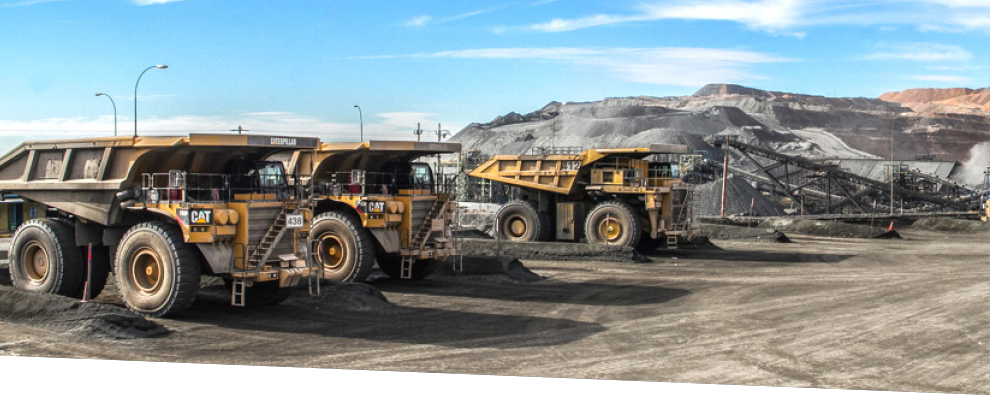AIR: EMISSIONS AND THEIR
IMPACT ON AIR QUALITY
CAP main operations are developed in areas where air quality is a material issue. Therefore, emission control and reduction are strategic lines for the company.

Air quality has been a major environmental concern in our country over the past years. This nation-wide apprehension applies both to the communities located in the industrial and mining zones of northern Chile as well as to people living in large metropolitan areas and in southern cities where firewood burning is a common practice.
Early this decade, and in order to address this situation, the authorities put in place improvement plans designed to reduce MP2.5, a type of particulate material whose high concentrations existing in the Metropolitan Region (over 35 μg/Nm3) positioned Chile in second place among OCDE countries with the highest percentage of exposed population. However, since 2014, these efforts extended to other action fields under the form of a new countrywide air decontamination strategy developed by the Ministry of the Environment, intended to cover 2014 to 2018.
The CAP Group is committed to contribute to this national challenge by unconditionally complying with the norms governing these issues and by promoting, among its companies, the incorporation of systems and practices that help continue to reduce the emissions of gases and materials that affect air quality in the areas where they operate.
| Operation | Strategy and management in 2017 | |
|---|---|---|
| CAP Minería and Las Losas port | Since 2017, emissions from CAP operations located in Huasco, Atacama region, are managed according to the Air Prevention and Decontamination Plan for Huasco (APDPH) and its neighboring areas. In order to move forward in complying with these provisions, the company completed some actions associated to the cleaning of railways and railroad cars. Likewise, and given it operates in Huasco, CAP Minería must also comply with the Environmental and Social Recovery Program for the Huasco commune (ESRP of Huasco), the pellet plant, tarped and hydrowashed the freight train cars and reused 100% of the water coming from the wastewater processing plant. |
|
| CAP Acero | CAP Acero efforts have been basically focused on ensuring the operational continuity of the existing suppression systems and on cutting down on oil consumption to reduce the volume of emissions. Starting in 2018, these activities might be subject to the provisions contained in the Air Prevention and Decontamination Plan applicable to the metropolitan area of Concepcion, approved in April 2017, under Resolution Nº 242 by the Ministry of the Environment and the Superintendence of the Environment and on December, by the Council of Ministers for Sustainability. |
|
| Cintac, Tupemesa and TASA | The provisions contained in the Air Prevention and Decontamination Plan for the Metropolitan Region have a direct impact on the operation of Cintac boilers, support groups and process sources. For each of the above, the plan sets up regulatory emission reduction percentages to be met between 6 and 12 months from the date the plan was issued. To that effect, a pilot Live Filter was installed in one of these sources, as one of the first measures adopted by this operation. At TASA, emission management is mainly focused on measuring and monitoring the gases generated by its Epoxy paint process. The respective controls performed in 2017 confirmed regulatory limit compliance by the company. Tupemesa applies an Air Emission Control Program on the galvanizing furnace, which allows emitted gases to be captured and channeled to an exhaust system through bag-filter ducts. In 2017, The pollutant levels revealed by the air emissions monitored from the galvanizing furnace were found to be below the maximum reference permissible levels (MPLs) of international standards. Same confirmation occurred for carbon monoxide and nitrogen oxide levels. Tupemesa also applies preventive maintenance programs to its exhaust systems and bag filters as well as a maintenance program to fork lifts in order to keep control of its combustion emissions into the atmosphere. |
|
| Minería | Acero | |||||
|---|---|---|---|---|---|---|
| Huasco pellet plant | Talcahuano steelworks | |||||
| 2015 | 2016 | 2017 | 2015 | 2016 | 2017 | |
| Annual mean concentration of MP2.5 (micrograms per normal cubic meter) Source: Nueva Libertad station, Talcahuano |
n.i. | n.i. | n.i. | 18 | 22.6 | 17.1 |
| Annual mean concentration of MP10 (micrograms per normal cubic meter) Source: Población Huasco Norte station |
40.1 | 31.1 | 29.9 | 53.5 | 55.0 | 52.1 |
| NOx emissions | n.i. | n.i. | 3.22 | n.i. | n.i. | n.i. |
| SOx emissions | 2.80* | |||||
| * NOx and SOx emissions from Huasco pellet plant are measured twice a year: July and December. The above values correspond to July-17. | ||||||
